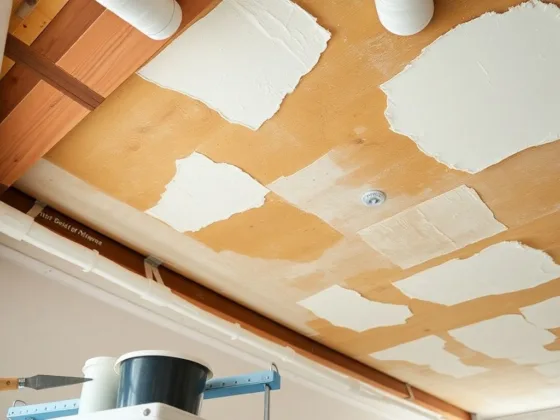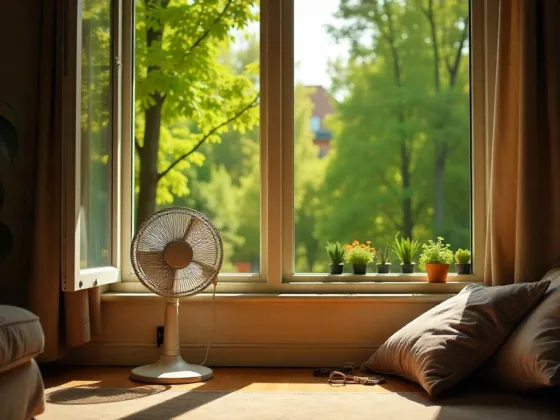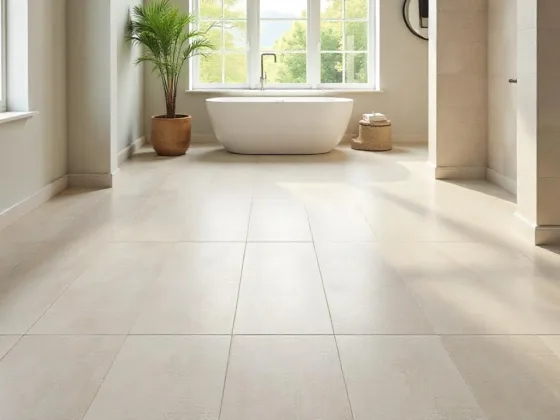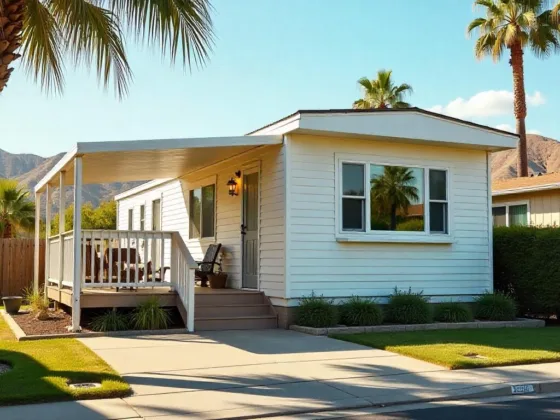Introduction
A well-constructed concrete garage floor slab is fundamental to the long-term function and durability of your garage. This foundation carries the weight of vehicles, tools, and other heavy equipment, making it essential to get it right from the start. A better concrete garage floor slab means fewer issues with cracking, moisture damage, and overall wear and tear.
Tips for a Better Concrete Garage Floor Slab focuses on proven methods and best practices that ensure your slab stands up to daily use and environmental stresses.
Key takeaway: In this article, we will discuss essential tips to help you construct a durable and long-lasting concrete garage floor slab that can withstand heavy loads and resist common issues such as cracking and moisture damage. These insights will guide you through every step of the process, ensuring a robust foundation for your garage.
1. Ground Preparation
The first crucial step in the construction process is to prepare the ground adequately to ensure a stable foundation for the concrete slab. Ground preparation directly impacts the stability of the concrete slab, preventing future issues such as cracking or settling.
Steps for Ground Preparation
1. Removing the Topsoil Layer
- Topsoil Removal: The initial task involves removing the topsoil layer. This step is fundamental because topsoil contains organic matter that can decompose over time, leading to voids and instability in your concrete slab. Typically, removing about 6 to 12 inches of soil is recommended, but this can vary depending on local soil conditions.
- Example: If you’re working in an area with heavy clay content, you might need to dig deeper to remove all organic materials and ensure a solid base.
2. Adding a Layer of Compacted Gravel or Crushed Stone
Gravel or Stone Layer:
After topsoil removal, add a layer of compacted gravel or crushed stone. This layer should be around 4 to 6 inches thick. It serves multiple purposes:
- Improved Drainage: Helps water drain away from the slab, reducing moisture-related problems.
- Load Distribution: Provides a stable base that evenly distributes the load from the concrete slab.
Compaction:
Use a plate compactor to compact the gravel or stone layer thoroughly. Proper compaction minimizes settlement and ensures uniform support for your concrete slab.
Example:
In regions prone to heavy rainfall, using larger aggregates like crushed stones can enhance drainage capabilities.
3. Leveling and Smoothing
- Levelling: Ensure that the surface of your gravel or stone layer is level and smooth. Uneven surfaces can lead to inconsistent thicknesses in your concrete slab, compromising its structural integrity.
- Tools: Utilize tools such as rakes and levels to achieve a flat, even surface.
4. Geotextile Fabric (Optional)
- Geotextile Fabric: For additional stability and separation between soil and gravel layers, consider placing geotextile fabric before adding gravel. This fabric prevents soil particles from mixing with gravel, maintaining the integrity of your base layer.
5. Additional Considerations
- Soil Testing: Conducting soil tests can help identify specific challenges related to your site’s soil composition and inform better preparation strategies.
- Drainage Solutions: Incorporate any necessary drainage solutions around your garage site to manage water flow effectively.
Proper ground preparation sets the stage for constructing a durable and long-lasting concrete garage floor slab. By removing organic matter through topsoil removal and adding a well-compacted gravel or stone layer, you create a stable foundation that enhances load distribution and improves drainage.
2. Using a Vapour Barrier
Installing a vapour barrier underneath the concrete can help mitigate moisture-related issues. Water vapour rising from the ground can cause significant damage to concrete slabs, leading to cracks, mould growth, and other structural problems. A vapour barrier, typically made from thick plastic sheets, acts as a shield to prevent water from penetrating the slab.
Why Use a Vapor Barrier?
- Water Damage Prevention: The primary function of a vapour barrier is to prevent water from seeping up through the porous concrete. This effectively minimizes the risk of moisture damage.
- Mould and Mildew Prevention: By keeping moisture out, you reduce the chances of mould and mildew forming under or within the slab.
- Improved Longevity: A vapour barrier can extend the lifespan of your garage floor by preventing issues associated with prolonged exposure to moisture.
Types of Vapor Barriers
- Polyethylene Sheets: These are commonly used due to their durability and effectiveness. They come in various thicknesses, generally ranging from 6 mil to 20 mil.
- Rubber Membranes: While more expensive, rubber membranes offer superior protection and are often used in high-moisture areas.
Installation Tips
- Choose the Right Thickness: A thicker sheet offers better protection. For most residential garages, a 10-mil polyethylene sheet is sufficient.
- Overlap Seams: Ensure that all seams overlap by at least 6 inches and tape them securely to prevent any gaps.
- Extend Beyond Edges: The vapour barrier should extend beyond the edges of where the concrete will be poured to fully encapsulate the area.
Incorporating a vapour barrier beneath your concrete garage floor slab is an essential step for long-term durability and performance.
3. Getting the Right Concrete Mix
Using the correct concrete mix is essential for achieving a strong and durable garage floor slab. The quality of the mix directly impacts the slab’s ability to withstand heavy loads and resist common issues like cracking.
Concrete Mix Design
Aim for a minimum thickness of four inches for your concrete slab. This thickness can vary based on regional building codes and specific load requirements.
To enhance the durability of the concrete, consider these factors:
- Air-Entraining Agents: In cold climates, incorporating air-entraining agents helps prevent damage from freeze-thaw cycles. These agents create tiny air bubbles within the concrete, allowing it to expand without cracking.
- Fibre Reinforcement: Adding fibre reinforcement improves the tensile strength of the concrete, reducing the likelihood of cracking and increasing overall durability. Fibre-reinforced concrete can be particularly beneficial in areas prone to heavy traffic or dynamic loads.
A well-designed mix should balance strength, workability, and durability. For example, utilizing a mix with a lower water-cement ratio can increase the strength but might affect workability. Adjusting these ratios appropriately ensures that you achieve an optimal balance tailored to your specific needs.
Ensuring a high-quality mix is crucial for building a reliable garage floor slab that stands up to daily wear and tear while minimizing maintenance needs.
4. Providing Adequate Reinforcement
Reinforcing the concrete garage floor slab is crucial for preventing cracking and enhancing its structural integrity. There are several reinforcement methods to consider, each offering unique benefits.
Wire Mesh
Wire mesh is a popular choice for reinforcing concrete slabs due to its ease of installation and effectiveness. The mesh is laid down before pouring the concrete, ensuring that it remains in place during the curing process. This method helps distribute loads more evenly across the slab, reducing the risk of cracks forming under heavy pressure.
Rebar
Rebars (reinforcement bars) provide another robust option for reinforcing your garage floor slab. These steel bars are placed in a grid pattern within the formwork before pouring the concrete. Rebar offers superior tensile strength, making it particularly effective in areas subject to high stress or heavy loads.
Fiber Reinforcement
In addition to traditional methods like wire mesh and rebar, fibre reinforcement can be mixed directly into the concrete. Fibres such as polypropylene or steel help improve the slab’s overall toughness and reduce shrinkage cracks. This method is especially useful in minimizing surface imperfections and enhancing durability.
Combining Methods
For maximum strength, combining different reinforcement methods may be beneficial. For instance, using both wire mesh and fibre reinforcement can provide comprehensive protection against various types of stress and load conditions.
Proper reinforcement is essential for constructing a durable and long-lasting concrete garage floor slab. By choosing the right materials and techniques, you can significantly enhance the performance and lifespan of your slab.
6. Proper Finishing and Curing Techniques
The way you finish and cure the concrete can affect its final appearance and durability.
Finishing Techniques
- Levelling: Start by levelling the concrete with a screed to ensure a flat surface. This step is crucial for achieving an even slab.
- Smoothing: Use a bull float to smooth the surface and eliminate any ridges or valleys left by the screed.
- Edging and Jointing: Employ an edging tool to round the slab edges, preventing chipping. Jointing tools can be used to create control joints, which help manage cracking.
Curing Techniques
Proper curing is vital for concrete strength and durability. It involves maintaining adequate moisture content in the slab to ensure proper hydration of the cement.
- Moisture Retention: Cover the slab with plastic sheeting or wet burlap to retain moisture. This is essential for preventing premature drying, which can cause surface cracking.
- Curing Compounds: Apply curing compounds to the surface to form a membrane that traps moisture within the concrete.
- Water Curing: Keep the concrete continuously moist by applying water regularly. This method is especially effective in hot climates where rapid drying can be a concern.
Tending to these finishing and curing techniques will enhance the quality and longevity of your concrete garage floor slab, making it resilient against wear and tear.
Proper finishing and curing not only enhance durability but also improve the slab’s visual appeal. For long-lasting results, attention to these details is vital.
Conclusion
Constructing a durable and long-lasting concrete garage floor slab hinges on adhering to several crucial tips. Each step in the process, from ground preparation to finishing and curing, plays an integral role in ensuring the slab can endure heavy loads and resist common issues such as cracking and moisture damage.
Following these essential tips will help you achieve a high-quality concrete garage floor slab:
- Ground Preparation: Properly preparing the ground by removing topsoil and adding a layer of compacted gravel or crushed stone provides a stable foundation.
- Vapour Barrier: Incorporating a vapour barrier underneath the concrete helps mitigate moisture-related problems.
- Right Concrete Mix: Using the correct mix that includes air-entraining agents and fibre reinforcement ensures strength and durability.
- Adequate Reinforcement: Adding reinforcement like wire mesh or rebar can significantly enhance the structural integrity of the slab.
- Expansion Joints: Including well-spaced expansion joints accommodates natural expansion and contraction due to temperature changes.
- Finishing and Curing: Ensuring proper finishing techniques and maintaining moisture during curing affects the final appearance and longevity of the concrete.
By meticulously attending to each detail, you can create a concrete garage floor slab that stands up to time, weather, and usage.
FAQs (Frequently Asked Questions)
A well-constructed concrete garage floor slab is important for withstanding heavy loads and resisting common issues such as cracking and moisture damage, ensuring durability and longevity.
The steps for ground preparation include removing the topsoil layer to prevent organic matter from compromising the integrity of the slab, and adding a layer of compacted gravel or crushed stone for improved drainage and load distribution.
Installing a vapour barrier underneath the concrete can help mitigate moisture-related issues, preventing water damage to the garage floor slab.
Using the correct concrete mix is essential for achieving a strong and durable garage floor slab that can withstand heavy loads and resist common issues such as cracking and moisture damage.
Reinforcing the concrete can help prevent cracking and improve its structural integrity, ensuring the durability and longevity of the garage floor slab.
Incorporating properly spaced expansion joints in the slab allows for expansion and contraction movements, which are crucial to prevent cracking due to temperature and humidity changes.
The way you finish and cure the concrete can affect its final appearance and durability, making it crucial to follow proper finishing and curing techniques for a high-quality garage floor slab.










